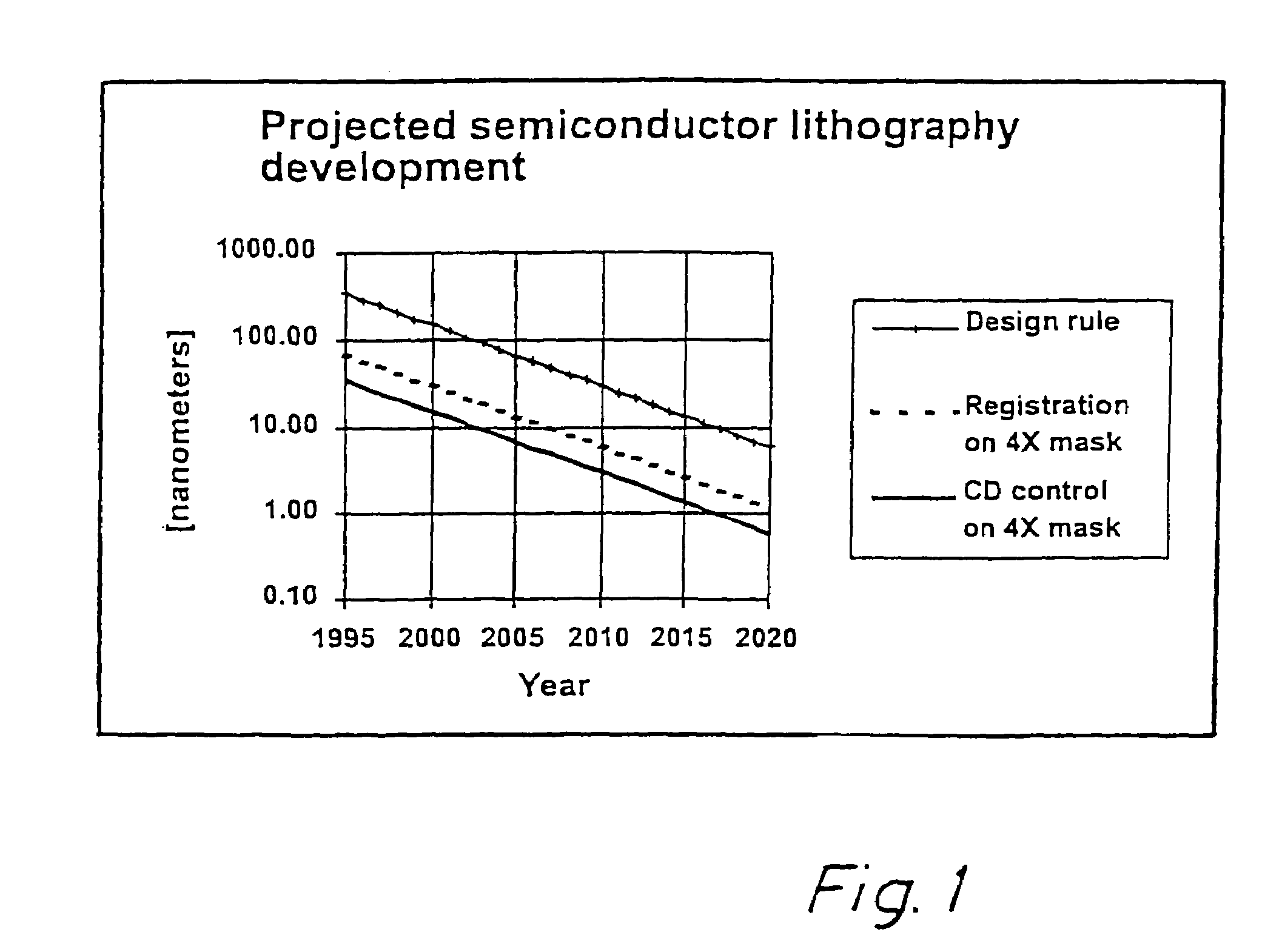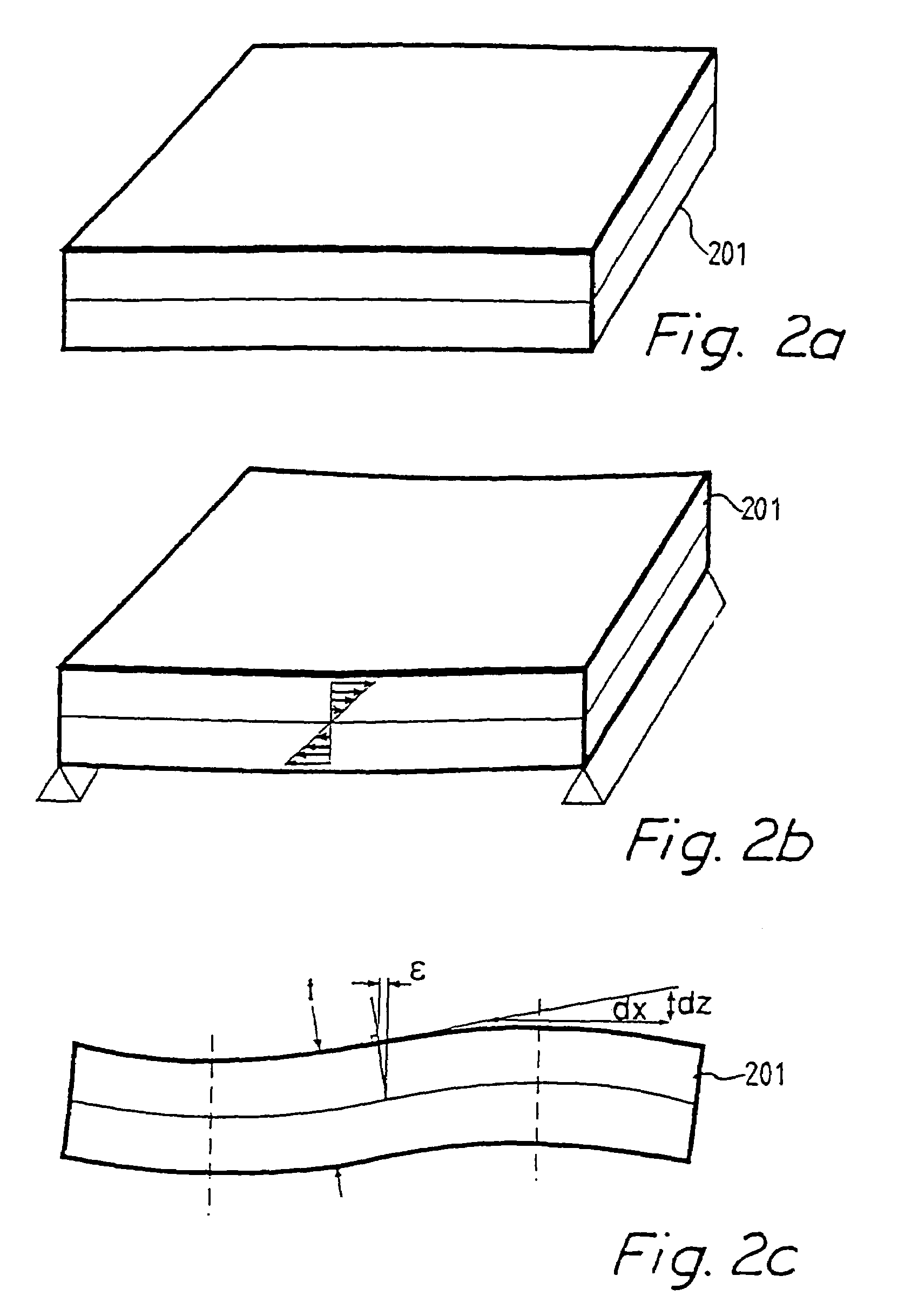Method for error reduction in lithography
a lithography and error reduction technology, applied in the field of lithography error reduction, can solve the problems of difficult to achieve the pattern fidelity needed, less certain predictions, and no one knows if the electronics industry will still be using transistors
- Summary
- Abstract
- Description
- Claims
- Application Information
AI Technical Summary
Benefits of technology
Problems solved by technology
Method used
Image
Examples
Embodiment Construction
[0037]The invention is best described as a control system, such as is shown in FIG. 5. The pattern picks up errors 501, 502 of different kinds when it is converted from a design data file 503 and a mask blank 504 to a mask 505 during a mask writing procedure 506, i.e. exposure, by means of a mask writer 507. The mask is thereafter used to produce an electronic device 508. The pattern file describes what the chip or panel designer wants to see printed and any deviation is to him an error. One part of these errors is that systematic and other errors are different from one time to another. The invention is based on the identification of different types of errors and the appropriate way to reduce each type. Errors that can be found in the output from the system and identified to be recurring in a systematic fashion are reduced by feeding an inverse error 509 back to the writing of the mask. This is the feed-back loop 510 in FIG. 5. The feed-back can be pseudo-continuous, i.e. correction...
PUM
| Property | Measurement | Unit |
|---|---|---|
| thickness | aaaaa | aaaaa |
| critical dimension | aaaaa | aaaaa |
| size | aaaaa | aaaaa |
Abstract
Description
Claims
Application Information
 Login to View More
Login to View More - R&D
- Intellectual Property
- Life Sciences
- Materials
- Tech Scout
- Unparalleled Data Quality
- Higher Quality Content
- 60% Fewer Hallucinations
Browse by: Latest US Patents, China's latest patents, Technical Efficacy Thesaurus, Application Domain, Technology Topic, Popular Technical Reports.
© 2025 PatSnap. All rights reserved.Legal|Privacy policy|Modern Slavery Act Transparency Statement|Sitemap|About US| Contact US: help@patsnap.com



